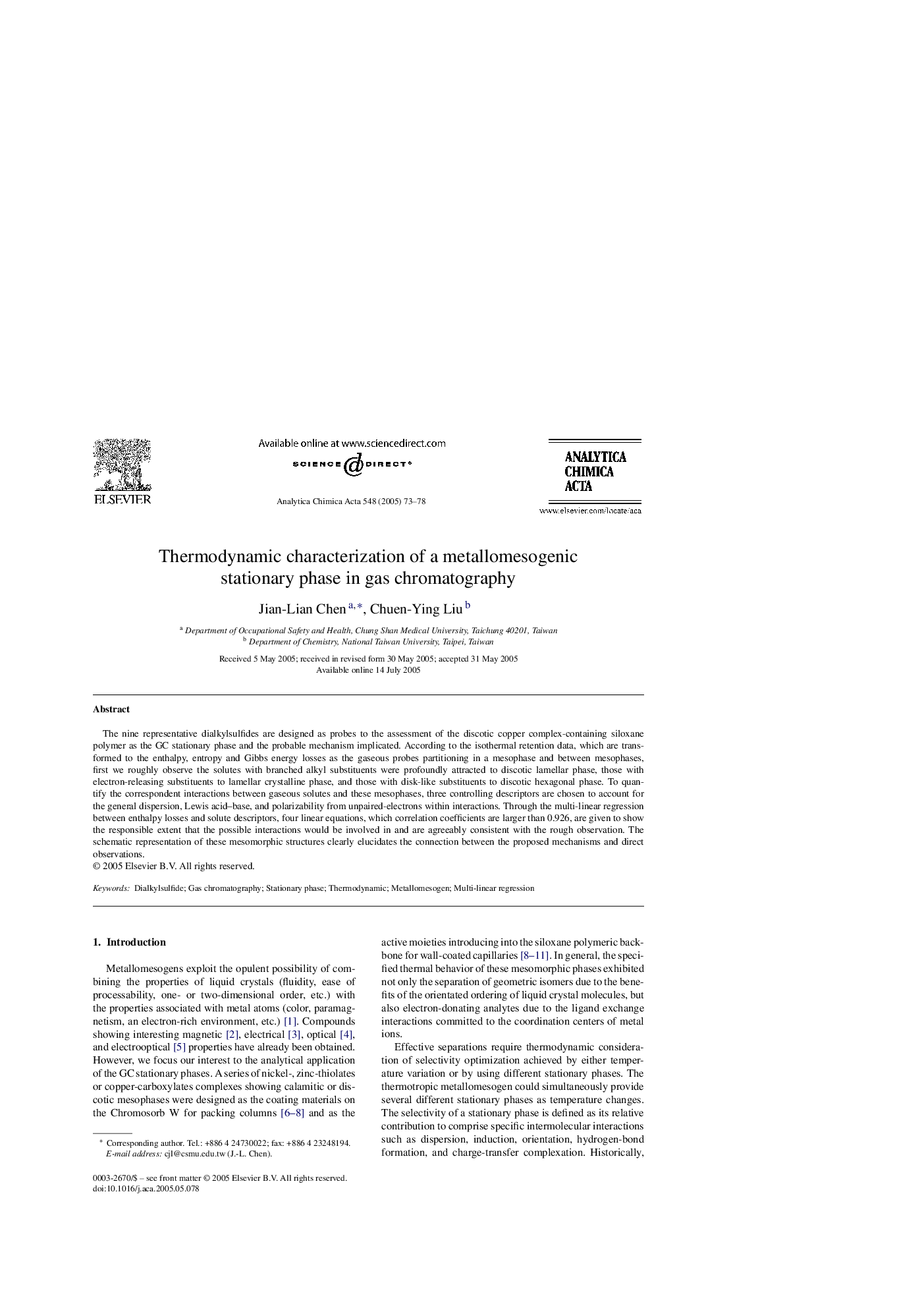| Article ID | Journal | Published Year | Pages | File Type |
|---|---|---|---|---|
| 9743493 | Analytica Chimica Acta | 2005 | 6 Pages |
Abstract
The nine representative dialkylsulfides are designed as probes to the assessment of the discotic copper complex-containing siloxane polymer as the GC stationary phase and the probable mechanism implicated. According to the isothermal retention data, which are transformed to the enthalpy, entropy and Gibbs energy losses as the gaseous probes partitioning in a mesophase and between mesophases, first we roughly observe the solutes with branched alkyl substituents were profoundly attracted to discotic lamellar phase, those with electron-releasing substituents to lamellar crystalline phase, and those with disk-like substituents to discotic hexagonal phase. To quantify the correspondent interactions between gaseous solutes and these mesophases, three controlling descriptors are chosen to account for the general dispersion, Lewis acid-base, and polarizability from unpaired-electrons within interactions. Through the multi-linear regression between enthalpy losses and solute descriptors, four linear equations, which correlation coefficients are larger than 0.926, are given to show the responsible extent that the possible interactions would be involved in and are agreeably consistent with the rough observation. The schematic representation of these mesomorphic structures clearly elucidates the connection between the proposed mechanisms and direct observations.
Related Topics
Physical Sciences and Engineering
Chemistry
Analytical Chemistry
Authors
Jian-Lian Chen, Chuen-Ying Liu,
